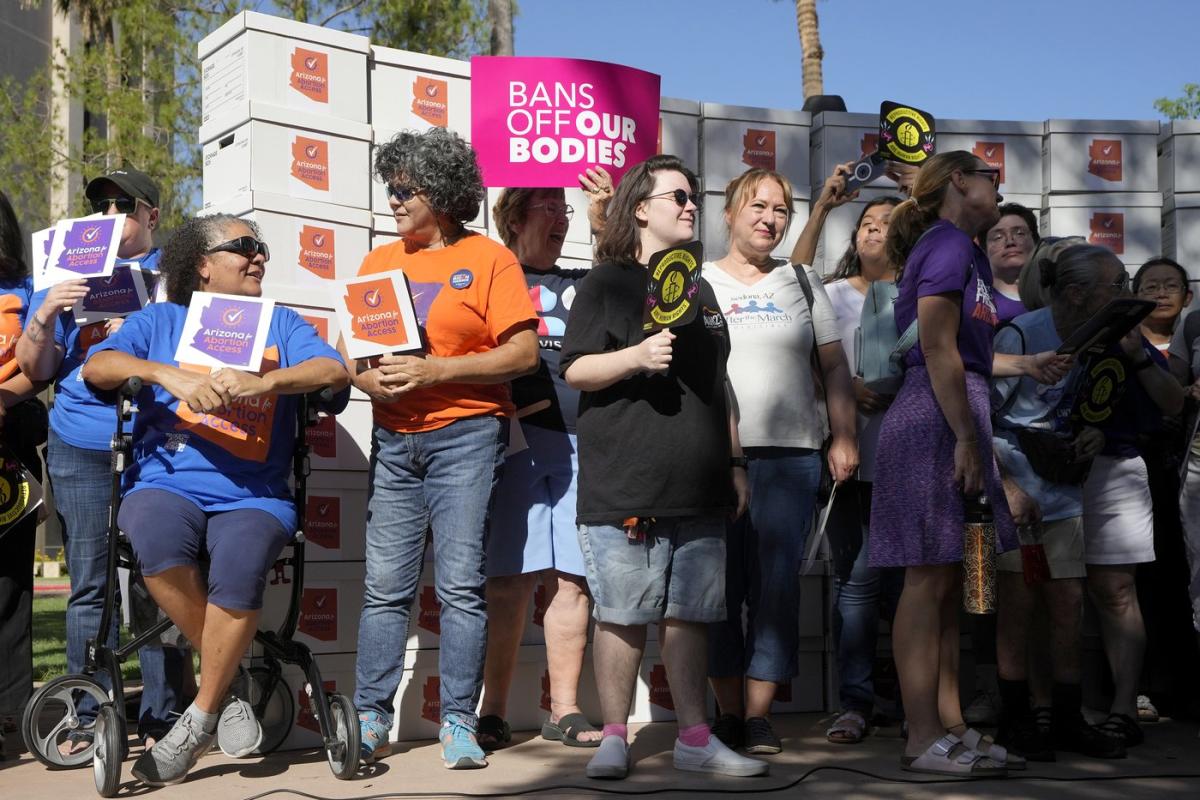




In the United States, the issue of abortion access has become increasingly critical, especially in light of recent tragic events. Amber Nicole Thurman, a 28-year-old from Georgia, died of sepsis after waiting 20 hours for medical care following an incomplete medication abortion. Her death has been deemed preventable by ProPublica, highlighting the severe consequences of restrictive abortion laws [4e0514c8].
As the nation approaches the November elections, abortion has emerged as the most important issue for women voters under 45, surpassing even economic concerns. Vice President Kamala Harris emphasized Thurman's story in a recent speech, underscoring the dangers posed by abortion bans. Polls indicate that 27% of voters prioritize abortion in the upcoming election, with a striking 74% of women aged 18-49 opposing state-level decisions on abortion [4e0514c8].
In Ohio, the ballot issues surrounding abortion rights, particularly Issue 1, continue to stir debate among residents. Proponents argue that it is essential for ensuring access to abortion, while opponents warn of potential negative consequences for women's healthcare. The discussions reflect a broader national conversation about reproductive rights and the implications of restrictive laws [be147179].
Additionally, ten states will vote on constitutional measures for abortion access in November, which could significantly impact Republican candidates. Despite the evident support for abortion rights, translating this into votes remains uncertain. This is particularly evident in the fluctuating stance of former President Donald Trump on abortion, which has not diminished his support among certain voter demographics who favor legal abortion [4e0514c8].
Research coauthored by UCSB Professor Cate Taylor and Bethany Everett from the University of Utah indicates that women who grew up in areas with fewer abortion restrictions and those who had abortions in adolescence are more likely to graduate from high school and college, earn higher incomes, and experience greater financial stability. The study, published in the American Sociological Review, highlights that about one in four women in the U.S. have abortions, with 60% already having children. The overturning of Roe v. Wade in June 2022 may lead to negative economic impacts for women and families, particularly in states with strict abortion laws [a7d60bdb].
In Idaho, the organization Idahoans United for Women and Families is working on a ballot initiative to restore abortion access in response to strict abortion bans that have led to a shortage of healthcare providers. The federal government has also sued Idaho over its abortion ban, arguing that it violates federal law requiring hospitals to provide stabilizing care, including abortion, in medical emergencies [98e0e241].
The ongoing legal battles and procedural questions surrounding abortion rights ballot measures across the U.S. further complicate the landscape. Opponents of abortion access are focusing on technicalities, while advocates push for measures to ensure reproductive rights are protected. As the election approaches, the stakes are high, and the outcome could reshape the future of abortion access in America [48f9151b].
Overall, the intertwining of personal stories, legal battles, and political strategies underscores the urgency of the abortion rights issue in the upcoming elections. The implications for women's health and rights are profound, making it imperative for voters to engage with these critical issues [4e0514c8] [98e0e241].